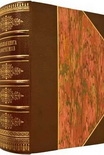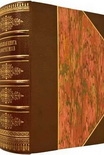Low Magick Lon DuQuette (top 10 inspirational books .txt) 📖

- Author: Lon DuQuette
Book online «Low Magick Lon DuQuette (top 10 inspirational books .txt) 📖». Author Lon DuQuette
The wind drives across heaven: The image of THE TAMING POWER OF THE SMALL. Thus the superior man refines the outward aspect of his nature.90
Okay. That was enough for me. My “spirits” had spoken. I was confident that Sarah and David would have a son, that Ezriel would be a grandfather, that the ageless traditions of that East Coast fairy-tale community would go on at least one generation more—if David could just become a “superior man” and “refine” the outward aspect of his nature … in bed.
I wrote Ezriel. I told him I had consulted with my spirits and that I was assured a man-child would be born to David and Sarah if David made the effort to be gentle and charming to Sarah prior to making love. I then really stuck my neck out and added, “The child will be conceived the moment they lie laughing in each others’ arms.” To tell you the truth, I don’t know why I added that last part. It just came to me like I was momentarily possessed by some Fiddler on the Roof -type character.
I immediately got an e-mail back thanking me for my help, but no other comments. I then worried that my answer was too corny or personal or unmagical (or perhaps too Fiddler on the Roof-ish) to be taken seriously.
About sixty days later, I received a very upbeat message informing me that Sarah was pregnant and that everyone was hoping for the best.
About six months later, I received an e-mail from the Rabbi proudly announcing the birth of his grandson, and the simple note, “Thank you for your efforts.”
[contents]
81 I am not using real names in this particular story.
82 Actually, Ezriel never felt it necessary to tell me his daughter-in-law’s name, referring to her only as “my son’s wife.”
83 The roots of the I Ching can be traced back to Ching’s legendary first emperor Fu His (4000 bce).
84 The I Ching or Book of Changes, translators Richard Wilhelm and Cary Baynes. (New York: Bollingen Foundation Inc., 1950). Third edition reprinted with corrections by Princeton University Press, 1969.
85 Yarrow is also known as woundwort or nosebleed. Its medicinal properties have been known for millennia in both the East and West. Traditionally, yarrow has been associated with I Ching divination since the earliest years when sacred tortoises were released in a temple courtyard “planted” with a grid of dried yarrow stalks. The pattern of the stalks the tortoises knocked down was then interpreted for the answer to the question.
86 I Ching, 4.
87 I Ching, 40.
88 I Ching, 40–41.
89 I Ching, 42.
90 I Ching, 41.
thirteen
The Exorcism of
Our Lady of Sorrows
Part I
A School Possessed
I don’t fear Satan half as much as I fear those who fear him.
Saint Teresa of Avila
Perhaps the most dramatic example of Low Magick (at least as we are defining the term in this book) is the art of exorcism. Exorcism reaches back into prehistory, and, together with rites of fertility and the hunt, vies for the title of humanity’s oldest spiritual practice. Writing about exorcism is in its own way as dangerous as exorcism itself—perhaps more so, as there is so much opportunity for serious misunderstanding, not to mention all the evils ignorance and fear can visit upon superstitious humanity.
For young magicians, dabblers, and dilettantes the fantasy of waging magical war with a hideous demon who has taken up residence in some tormented soul reeks with the prospect of heroism, spiritual romance, and adventure. In truth, more often than not, where the subject of exorcism is concerned, the whole sad business merely reeks.
As I feel I must keep reminding you, I am not a mental health expert nor do I have a degree in psychology, so please understand that my opinions on this subject are drawn purely from a magical perspective and from my experiences with individuals who have solicited my advice and/or assistance (some of whom I felt actually needed an exorcism, though most of whom I believe did not).
Let’s bear in mind that the science of mental health is still in its infancy, and that in centuries past, maladies such as epilepsy, schizophrenia, depression, dissociative identity disorder (a.k.a. multiple personality disorder), and countless other conditions both mental and physical were believed to be the result of supernatural causes. The ancient physicians who attributed certain physical and mental abnormalities to demon or spirit possession might not have been so off the mark, especially when we remember that their patients’ spiritual reality included a solid belief in spirit illness and demon possession. Even today, rather than viewing a disease as our body’s natural reaction to an unhealthy lifestyle, chemical or biological poisoning, or an inherited abnormality, we apply a personal face to the malady as a malicious enemy that needs to be resisted and battled and defeated.
The wise witch doctor, shaman, or physician of old knew that if one can first heal the mind, the body would likely follow. If in the patient’s mind the illness could be simply personified as a common garden-variety demon—a bothersome pest that could driven off by a skilled exorcist—then the immense negative energy of the patient’s own fear and superstition could be turned back upon itself and used as a positive force to alleviate the





Comments (0)